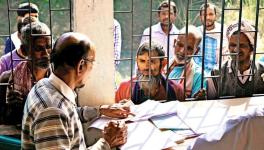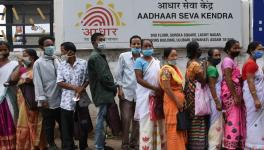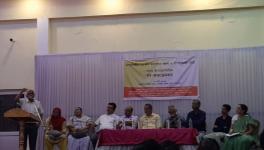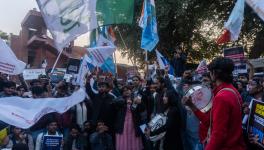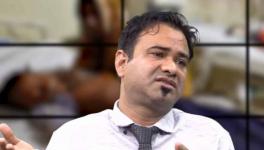Indigenous Inhabitants Register Is Not NRC
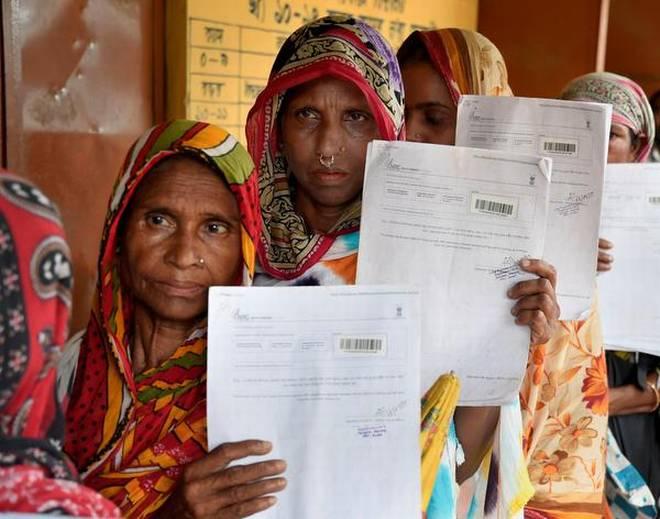
Representational Image. Image Courtesy: The Hindu
With Assam’s National Register of Citizens (NRC) in the backdrop, the government of Nagaland’s notification on June 29, to create a register of those who possess Indigenous Inhabitant Certificates (IIC), has inevitably been compared to the exercise in the neighbouring state. Though it makes for catchy headlines, the process that will commence from July 10 will have very little impact on the rights of the ‘outsiders’. Similarly, a failed petition in the Supreme Court challenging a notification to extend the inner line permit system (ILP) to Dimapur has also added to this perception.
What is IIC?
The IIC began from a notification issued by the government of Nagaland on April 28, 1977, signed by the then Joint Secretary, Shanmugam, which laid down the criteria for receiving the document. According to this notification, a person or their parents must have been permanently settled in Nagaland prior to December 1, 1963. Their names or their parents’ names should also have been on the electoral roll published on December 5, 1963. Else, the person or their parents must have paid house tax prior to December 1, 1963, or possess property or patta prior to the date.
What is clear from this notification is that nowhere does it state that the person in question has to be a Naga. Further, this notification would mean that Nagas who have permanently settled in Assam or Manipur prior to the cut-off date would be ineligible for receiving the certificate. As per the Constitution (Nagaland) Scheduled Tribes Order, 1970, five communities have been recognised as Scheduled Tribes (ST) in Nagaland provided they are residents of the state. They are: Naga, Kuki, Kachari, Garo and Mikir (Karbi). As for the Kachari, Garo and Karbi communities, historically speaking, they tended to live in and around Dimapur.
The only thing that is new about the process due to start on July 10 is that it will attempt to create a register of those who possess IICs. NewsClick was unable to access a copy of the notification, however, based on reports in the local news, it appears that there may be some process of IIC verification. This implies that there may be some ineligible IIC holders.
ILP for Dimapur
Various Naga civil society organisations have over the years demanded that the Bengal Eastern Frontier Regulation, 1873 be extended to Dimapur. Due to the cosmopolitan nature of Dimapur, and that it was once the seat of the Dimasa Kachari Kingdom – hence the name – ILP was not required to enter the area despite it falling within the state of Nagaland.
On August 21, 2018, the Abhishek Singh Committee was constituted through a notification to “to suggest measures to strengthen the existing system of issue of ILP in the State as well as to recommend modalities to check influx of illegal migrants”. Then on January 31, 2019, the outcome of consultative meeting between the state government and non-governmental organisations (NGO) in Chumukedima was that the ILP ought to be implemented across the state including Dimapur. Meanwhile, the Committee submitted its report to the state Cabinet on February 15. On February 21, the Governor of Nagaland, PB Acharya, in his address in the legislative Assembly, officially declared the government’s decision to extend the ILP system to Dimapur.
What ought to be mentioned is that both bringing Dimapur under the ILP regime as well as creating a register of Indigenous Inhabitants in Nagaland were recommendations of the committee report.
In mid-June, Bharatiya Janata Party (BJP) leader Ashwini Kumar Upadhyay created a stir in Nagaland when he filed a petition challenging the decision to bring Dimapur under the ILP regime. He contended that such a regime would affect the rights of ‘Hindus’ settled in Dimapur. However, on July 2, the Supreme Court summarily dismissed the petition mentioning that even Himachal Pradesh has an ILP regime in place despite having a Hindu population of around 98%.
However, prior to the petition’s dismissal, a minor flutter was created when it emerged that a Gorkha organisation was also listed on the petition. This led to Gorkha organisations in Nagaland declaring that they had nothing to do with the petition and even demanding its withdrawal. That the petition painted the ILP system as a form of racial discrimination saw even state BJP leaders distancing themselves from it.
The ILP system does not bar people from travelling and settling in the areas where it is applicable, neither does it bar anybody from being included on the electoral rolls. Given that the ILP does not create a bar on the exercise of fundamental rights, and serves only to record the entry and exit of people coming from outside. Further, the upcoming Register of Indigenous Inhabitants of Nagaland (RIIN) unlike the NRC in Assam can neither confirm nor deny citizenship. The greatest threat here is not being rendered ‘stateless’, but rather, being ineligible to benefit from state government schemes and employment.
Get the latest reports & analysis with people's perspective on Protests, movements & deep analytical videos, discussions of the current affairs in your Telegram app. Subscribe to NewsClick's Telegram channel & get Real-Time updates on stories, as they get published on our website.










